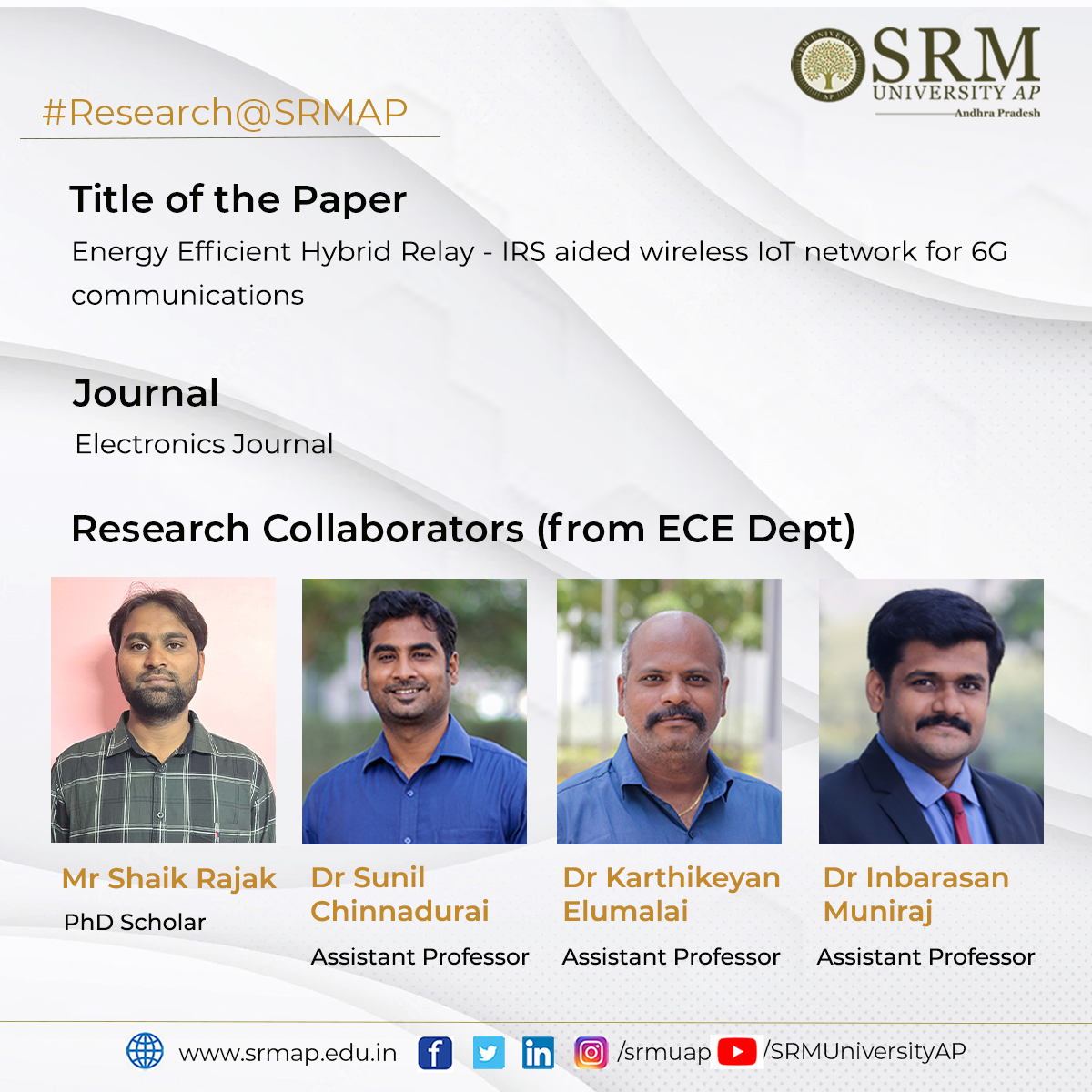
The Department of Electronics and Communication Engineering has come out with yet another rewarding publication, “Energy-Efficient Hybrid Relay – IRS aided wireless IoT network for 6G communications”, in the Electronics Journal, with Impact Factor 2.4. The article was published by Mr Rajak Shaik, PhD Scholar, in collaboration with the faculty members; Dr Sunil Chinnadurai, Dr Karthikeyan Elumalai and Dr Inbarasan Muniraj. This research is the first of its kind, which examines and compares the impact of relay-aided, IRS-aided, and novel hybrid relay-IRS-aided wireless IoT networks for 6G communications in terms of Energy Efficiency.
The article examines Energy Efficiency as a function of user distance and various SNR (Signal-to-noise ratio) values. The Energy Efficiency with fixed and varying numbers of IRS elements is analysed for the proposed IoT network. The results show that the proposed hybrid relay-IRS-assisted IoT network outperforms both the conventional relay and IRS-aided wireless IoT networks. The hybrid relay-IRS-aided IoT network can fulfil the requirements of high data rate, reliable data transfer, and large bandwidth needed for 6G communications. The multiple IRS concept can also be used in 6G communications at high SNR values to reduce both the cost and additional power consumption of wireless IoT networks. Their future research plan also includes the real-time implementations to improve the energy efficiency for wireless IoT networks with IRS in 6G communications.
Abstract of the Research
Intelligent Reflecting Surfaces (IRS) have been recognized as presenting a highly energy-efficient and optimal solution for future fast-growing 6G communication systems by reflecting the incident signal towards the receiver. A large number of Internet of Things (IoT) devices are distributed randomly in order to serve users while providing a high data rate, seamless data transfer, and Quality of Service (QoS). The major challenge in satisfying the above requirements is the energy consumed by the IoT network. Hence, in this paper, we examine the energy efficiency (EE) of a hybrid relay-IRS-aided wireless IoT network for 6G communications. In our analysis, we study the EE performance of IRS-aided and DF relay-aided IoT networks separately, as well as a hybrid relay-IRS-aided IoT network. Our numerical results showed that the EE of the hybrid relay-IRS-aided system has better performance than both the conventional relay and the IRS-aided IoT network. Furthermore, we realized that the multiple IRS blocks can beat the relay in a high SNR regime, which results in lower hardware costs and reduced power consumption.

